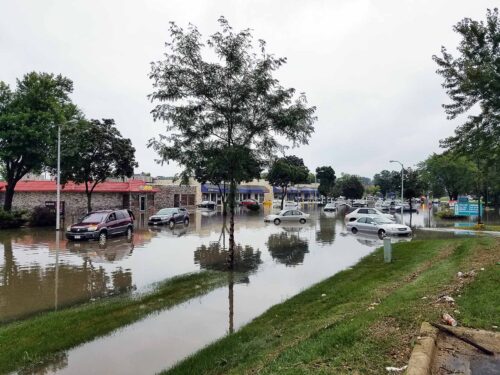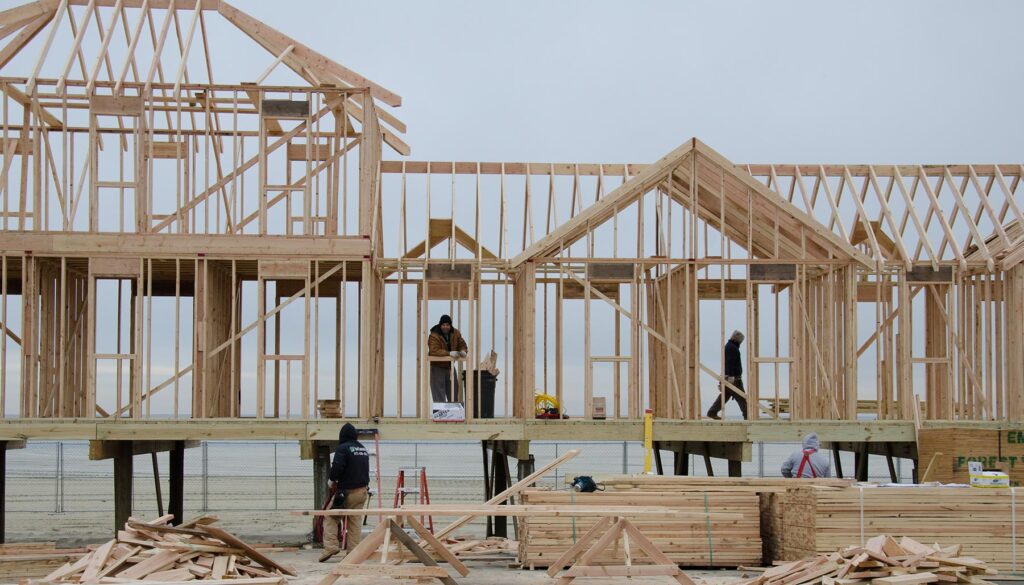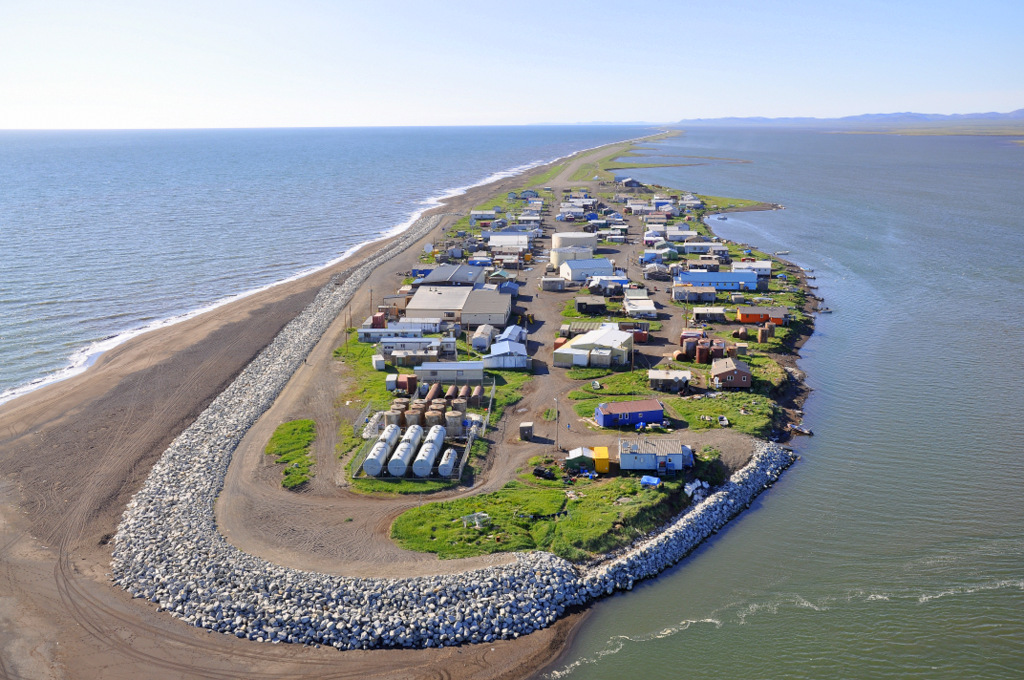
Preparing and Protecting Local Communities and Economies in the Face of Climate Change
How proactive investments can help communities, states, and the federal government future-proof community assets at scale.
This article is part of a series exploring challenges faced by households and communities in the wake of extreme weather events and the financing solutions that can advance resiliency.
Between 2019 and 2021, the US experienced 617 recorded climate-related disasters, displacing nearly 3.2 million residents. East coast hurricanes and west coast wildfires were the primary culprits, but devastating climate-related events and hazards of all types are continuing to cause both physical and financial impacts on properties and populations across the United States. Investment on a community-wide scale will be vital for recovery and to protect communities from future damage.
In theme with 2023’s Earth Day, “Invest in Our Planet,” we investigate how local communities are impacted by climate risks and explore potential solutions and investments to minimize the associated physical and economic impacts. Since climate-related events and hazards often impact select areas differently, we define communities in this case as region-specific groups of people collectively affected by the same climate events or hazards and response solutions, such as townships or neighborhoods.
What communities face in high climate risk zones
Historically, people who live in areas susceptible to wildfires, hurricanes, extreme heat, sea level rise, or other climate-related events or hazards have faced multiple realities. Their choices include:
- Investing in and preparing properties either before or after a climate disaster with the knowledge that they may have to repair and rebuild again in the future.
- Retreating or relocating after or in anticipation of future climate disasters. In the past two years, 30 percent of Americans have said climate change was a motivator to move. In some severe cases, relocation isn’t a choice but a necessity.
- Transferring the risk of climate change to other entities such as insurance agencies or the federal government. Homeowners transfer this risk by purchasing insurance or relying on home buyout programs.
- Doing nothing and hoping for minimal impacts. This is often due to financial burdens or other personal reasons.
Since not all communities have the financial resources either to adequately invest in property resiliency measures or to relocate, they often take on the risk themselves entirely or transfer it to other entities. Investing in proactive resilience strategies or managing relocation in areas deemed too risky are optimal adaptation strategies but only when prioritizing equity considerations. Many historically disadvantaged populations live in high climate-disaster risk zones because they have been priced out of other markets. These communities are then more likely to experience property damage and loss, higher insurance bills, and increased maintenance costs, further exacerbating preexisting economic and social disparities.
Strategic, equitable investment to prepare, repair, and rebuild

Rebuilding oceanfront properties after Hurricane Sandy. (photo credit: FEMA)
Proactive mitigation measures can help communities avoid the enduring and costly process of recovery after an extreme climate event, as noted in C2ES’s local government primer.
This support can include:- Grants, low-interest loans, and tax breaks: Financial incentives allow communities to invest in mitigation projects that not only prevent property damage and prepare communities for climate disasters but also reduce the emissions that are exacerbating more extreme natural disasters. Recent federal initiatives, including the Federal Emergency Management Agency’s (FEMA’s) Building Resilient Infrastructure and Communities program, the Infrastructure and Investment and Jobs Act, and the Environmental Protection Agency’s Environmental and Climate Justice Block Grants — which was enacted as part of the Inflation Reduction Act, are available to fund mitigation and restoration projects. States should act to make communities aware of financial incentive programs and facilitate grant program application and implementation.
- Collaboration among neighboring communities: Collaborating across various communities can be beneficial in sharing resources and knowledge to respond, withstand, and recover from extreme climate events through adaptive change initiatives and policy advancement. For example, the Mississippi River Cities and Towns Initiative is a coalition of over 100 mayors of towns in multiple states along the Mississippi River that share resources and coordinate resiliency plans to alleviate the financial and physical burden individual communities face from flooding and water pollution caused by climate events and hazards. This group of community leaders lobbies for federal climate resiliency funding and prompts further coordination between the state governments represented in the coalition.
- Community-wide insurance incentives: Skyrocketing property insurance premiums are becoming unaffordable for some homeowners and insurance is unavailable altogether in some high-risk regions. Community insurance incentives and initiatives can help reduce risk and rein in costs. The Community Rating System is an example of a federal policy that discounts National Flood Insurance Program premiums by between 5 and 45 percent based on community climate adaptation. Communities become eligible for these discounts through risk reduction activities, such as structural or elevation upgrades, property buyouts, and relocation of floodplain structures. Over 1,500 communities throughout the United States already participate in the program.
- Property valuation and risk modeling disclosure: Adequately assessing and disclosing flood risks will support communities and property owners alike in making more informed investment decisions. For example, the North Carolina Real Estate Commission just created a new requirement where sellers must disclose historic flood risk and damage for their properties. The new provisions were enacted after nonprofits and local organizations filed a petition pushing for climate-risk assessments that could support communities in understanding accurate property valuation and setting realistic expectations for future resiliency and decarbonization measures. Incentivizing and encouraging community-wide decarbonization efforts should be coupled with an advanced risk assessment framework to allow communities to make smart investment decisions for their financial well-being and for the planet.
When you have 90 percent of US counties experiencing a climate disaster in the span of ten years, local communities should be viewing climate resilience measures as necessary investments that enable a thriving future. Resilience investments are not unnecessary costs, rather, they are opportunities to reduce future recovery costs and improve the stability of the local economy when climate-driven challenges arise.
The effects of displacement and relocation on communities
Although managed retreat and relocation are typically a last resort for communities and homeowners, the realities of climate-change-driven extreme weather events and chronic hazards may leave some communities with no other choice. Displacement and mass relocation have substantial long-term social and financial effects on local communities and their economies. Solutions that consider the potential impacts of future disasters must be carefully considered not to perpetuate cycles of housing inequities and disinvestment.
FEMA is the leading federal agency addressing climate-induced relocation, managing grant programs that cover buyouts for individual properties, relocation of critical facilities, temporary relocation for homeowners, and moving or storage expenses. While this type of support has been directed toward individual households, community-driven relocation has been less common. Out of necessity, however, it should become more customary for areas that can no longer be protected from the effects of climate change.

Coastal erosion threatening an indigenous community in Kivalina, Alaska (photo credit: ShoreZone/Creative Commons)
Historically, investment efforts for climate risk at the federal level have been geared toward providing funding to impacted communities after extreme climate events. Since 1980, the United States has spent more than $2.475 trillion on damage from weather and climate disasters. To mitigate future costs, solutions must be considered in preparation for intensifying climate events or hazards and resulting climate-induced human migration within the United States.
Proactive investments can help communities, states, and the federal government avoid a portion of future costs and ensure equitable and effective solutions to build resiliency as the pressures from living in high-risk areas mount. Local communities must implement disaster preparedness plans; invest in resilience measures; build community resilience through education, training, or resilience hubs; and advocate for policy that leads to economy-wide decarbonization.
If you are interested in learning more about industry solutions to address the growing catastrophic climate risks that continue to face the US housing stock, click here.